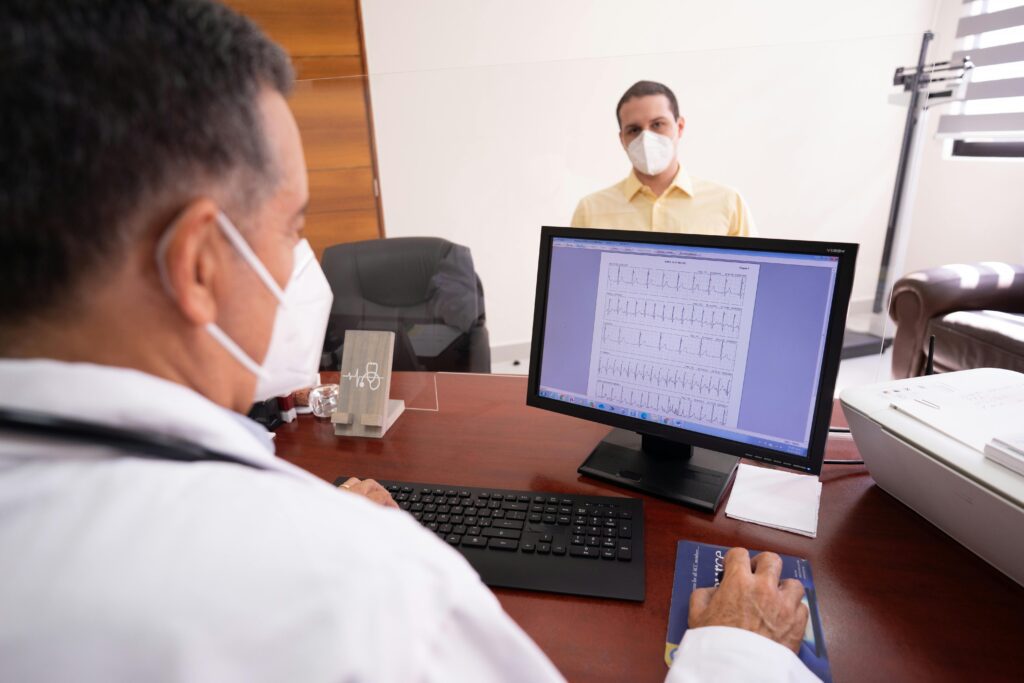Safeguarding Patient Data: Strengthening Healthcare Cybersecurity with Technology Solutions
Keeping patient information safe is a big worry for healthcare institutions, especially with more and more cyber threats targeting medical records. These breaches don’t just cost a lot of money and damage reputations; they also put patient safety at risk. But thankfully, using advanced security technologies can help stop data breaches and attacks before they happen.
These healthcare cybersecurity data breaches have exploded lately, especially during COVID when lots of patients visited hospitals. That made organizations vulnerable to security issues.
The typical cost of a data breach across all industries is around $4.45 million. But for healthcare it’s way higher, between $9.42 million to $10.1 million according to various sources – a 53% increase over 3 years. According to research, the average breach now costs a healthcare organization around $8 million, and that number keeps going up. One study says the total cost per patient record stolen could be over $400.
Year after year, breach costs rise about 10%. Now they average $4.24 million per incident. Healthcare cybersecurity data breaches are the most expensive, with costs jumping $2 million to $9.42 million per incident.
Some major factors driving the high costs of healthcare cybersecurity breaches include:
- Reputational damage and loss of patient trust
- Legal liabilities and regulatory fines
- IT and forensic investigation expenses
- Business disruption and revenue loss
- Notification and patient monitoring costs
Proactive Healthcare Cybersecurity Monitoring and Threat Detection
Working with managed security providers gives 24/7 monitoring, threat detection and expert response. These services use advanced tools and analysts to spot and stop threats before they get out of hand. This allows healthcare organizations to focus on patient care.
Specifically, managed detection and response (MDR) services analyze network activity using leading next-gen endpoints, firewalls, SIEM and more to identify anomalies. Machine learning models continuously improve threat detection accuracy. Dedicated security experts investigate triggers, contain advanced attacks, and recommend enhancements.
Minimizing Risk with Zero Trust Strategies
Traditional network security trusts too much within the network. Zero trust architecture requires users and devices to continuously prove they should have access. This shrinks the attack surface and reduces the risk of bad breaches.
Zero trust principles like least privilege access, micro-segmentation, and multi-factor authentication limit lateral movement after compromise. This also aids compliance with HIPAA, PCI DSS and other regulations.
Advanced Real-Time Threat Identification
Cutting-edge firewalls, intrusion prevention, and endpoint security solutions enable real-time identification and defense against sophisticated cyberattacks. This includes malware, ransomware, phishing and more, providing powerful proactive data protection.
By leveraging advanced AI and machine learning techniques, modern security solutions can analyze behavior patterns to instantaneously detect zero-day threats with high accuracy and low false positives. Cloud-based collective defense further strengthens protection.
Securing Emerging Technologies
Medical IoT devices improve care but also introduce potential vulnerabilities. Using strong identity protocols, network segmentation and firmware updates helps ensure these technologies stay secure.
As healthcare organizations adopt transformative technologies like IoT sensors, remote patient monitoring, telehealth systems, robots, and more, taking a proactive approach to security is essential. A defense-in-depth strategy protects across gateways, devices, applications, networks and cloud.
Maintaining Regulatory Compliance
Strict HIPAA rules require protections for patient data, with big penalties for violations. Security technology helps healthcare organizations comply with HIPAA by encrypting data, controlling access, logging activity, and more.
MDR services provide 24/7 monitoring, auditing and reporting to validate security controls are working as intended. Customized compliance dashboards demonstrate adherence to HIPAA, PCI DSS, and other relevant healthcare cybersecurity regulations.
Managed Detection and Response Services
Managed Detection and Response (MDR) services are really useful, particularly for organizations with limited IT resources. They provide a way for these organizations to have experts monitor and address threats, allowing them to focus on critical internal tasks. Plus, they offer remote security operations center capabilities with super thorough detection and customized incident response.
Top MDR providers like Expel, Arctic Wolf, and eSentire offer cloud-based solutions that combine advanced analytics with elite security experts. This empowers resource-constrained organizations, including those in healthcare, to implement enterprise-grade security.
According to various market research reports, the global MDR market is poised for significant growth. For instance, a report by GlobeNewswire suggests that the market is expected to grow from $2.6 billion in 2022 to $5.6 billion by 2027, at a CAGR of 16.0%. Another report by Fortune Business Insights projects the market to grow from $1.56 billion in 2023 to $6.29 billion by 2030, exhibiting a CAGR of 22.0%. Yet another report by Polaris Market Research predicts the market to surpass $11.2 billion by 2032.
These growth rates underscore the increasing sophistication of threats and the scarcity of talent, making outsourcing security operations an attractive option.
360REV: Your Trusted Partner in Healthcare Cybersecurity
By partnering with 360REV, you gain access to a network of leading cybersecurity providers and a team dedicated to understanding your unique challenges and guiding you towards the right solutions.
Contact 360REV today to discuss your healthcare cybersecurity needs and explore how we can help you safeguard patient data and build a more secure future.


